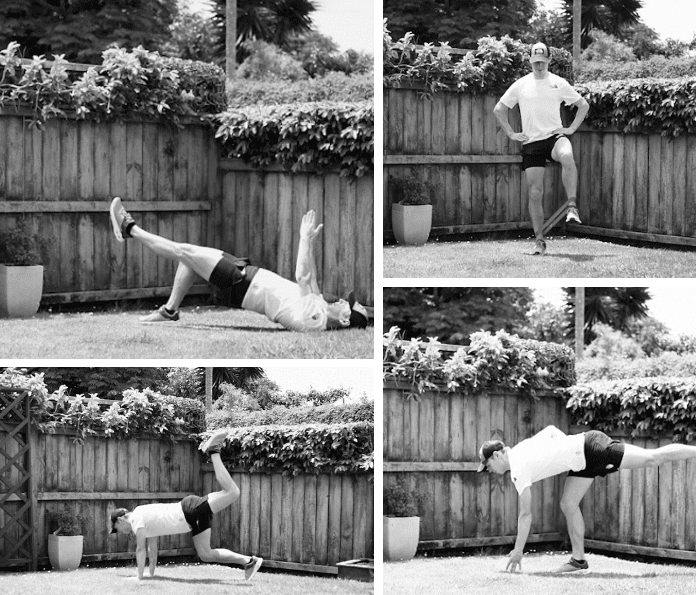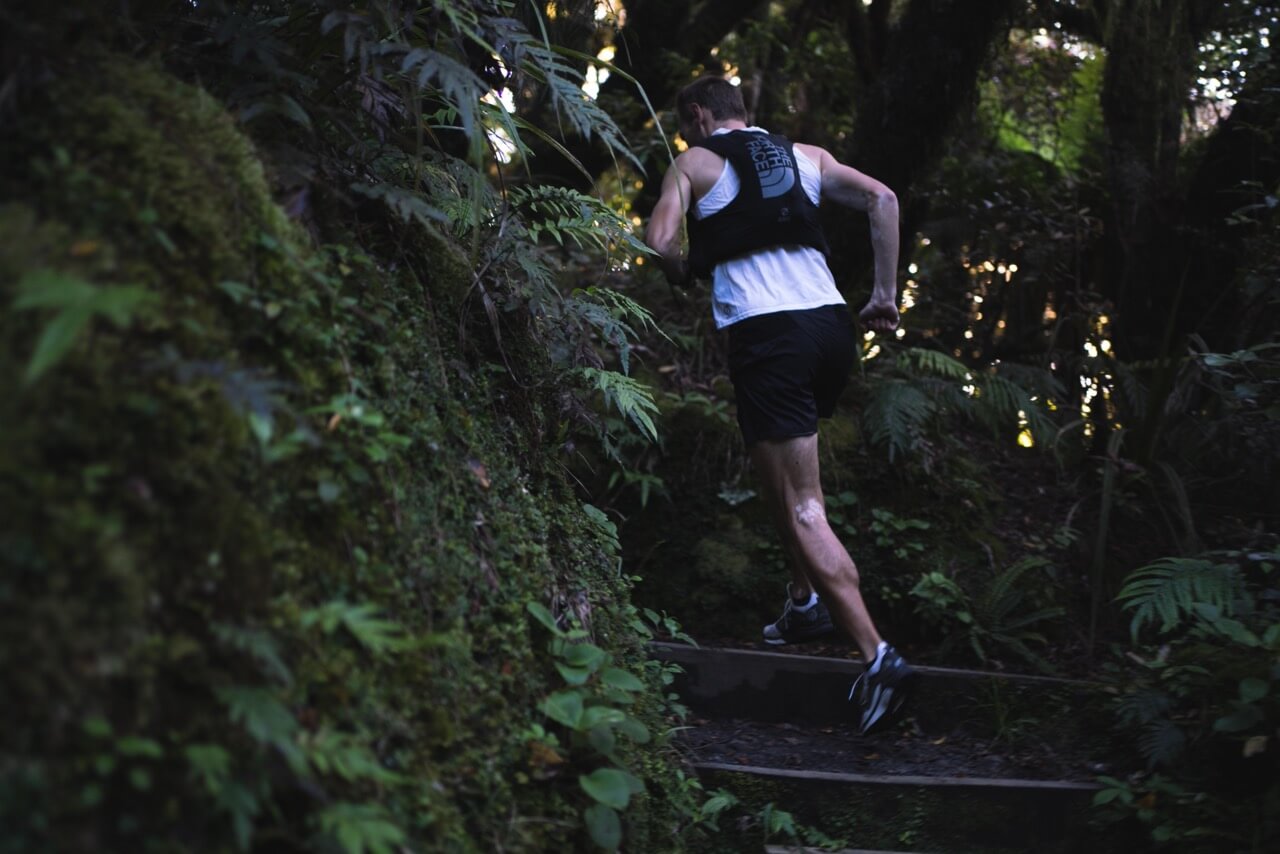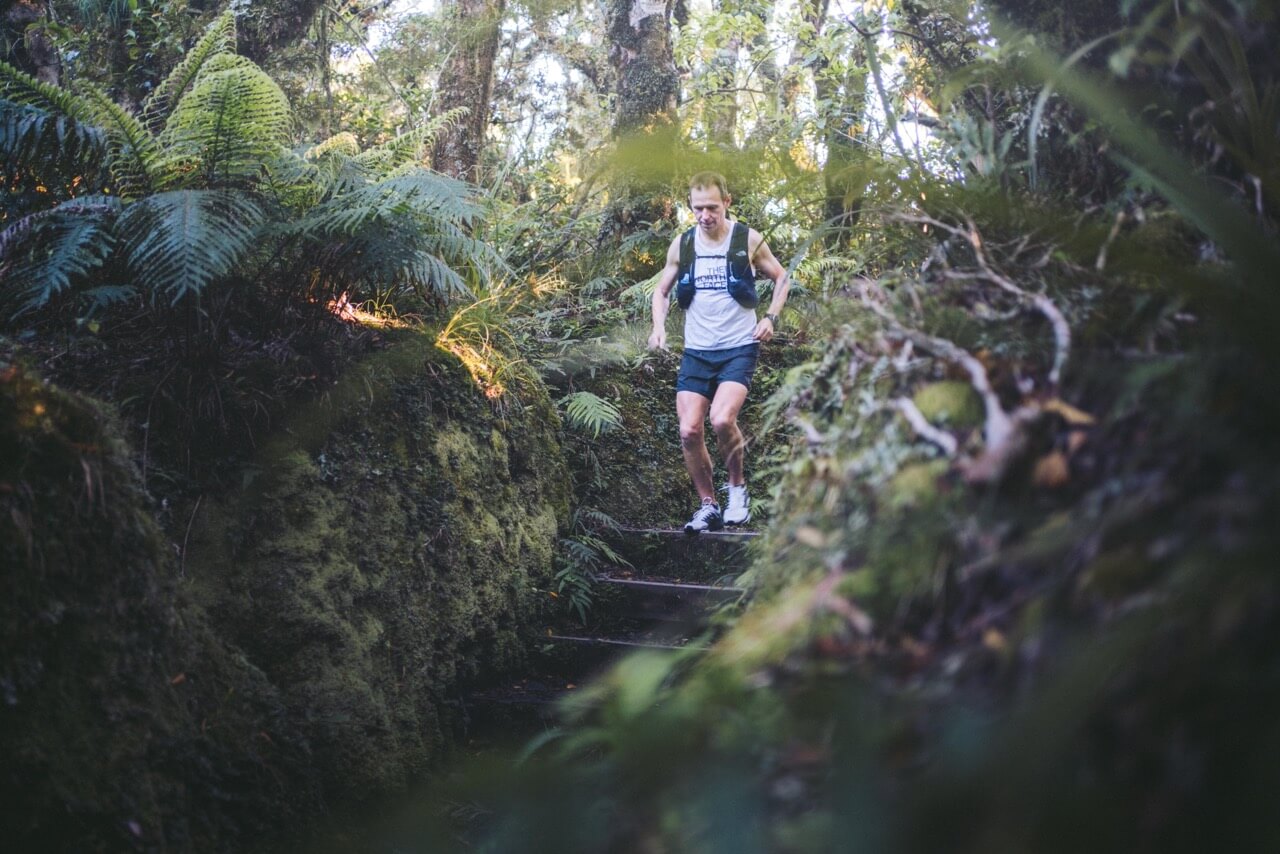Ascending to Great Heights: Conquering the Stairs of Ultra Trail Australia
Stairs can be routine terrain in ultra-trail races, and long sections of
them can be punishing! Moving smoothly and efficiently through these segments can help you to conserve your energy.
Ultra-Trail Australia is one of these events, with multiple sections of lung-crushing, calf-busting stairs.
The 100km course treats you to over 4,400m of vertical gain. You will encounter the Golden Stairs, stairs on the Six Foot Track and a last push up Furber Steps (951 stairs) in the final kilometers, when you are pining for the finish line!
The 50km and 22km events are also calf-busters, with 2,400m and 910m of vertical gain respectively (and nope, there's no escaping Furber Steps!)
Read on to learn more about getting stair-ready, whether it be for Ultra Trail Australia, or some other stair-y escapade you have planned.

Building Fitness
Preparing for the specific elements of UTA will make a huge difference
in your confidence and skills on the race day. Here are a few things to
consider when preparing for UTA stairs.
Cardiovascular fitness
To complete ultra races, runners mainly operate at an easy-to moderate exercise intensity, with sprinkles of high intensity segments during uphills and stairs. Incorporate high intensity training elements into your training sessions. Some ideas:
- Include 2 to 3 longer uphill efforts ranging from 3 to 10 minutes during your weekend long run. Try to complete them at a harder effort. If your breathing accelerates, but you are still able to maintain your uphill running, that’s a good sign that you are in the right intensity zone.
- Complete uphill interval sessions on your local hill, e.g. 10 x 1min uphill hike or jog at a harder effort. Make sure to warm up well and be free of any niggles in your body before attempting this.
- Use a treadmill or stair master for longer uphill challenges. Set a treadmill at 7-15% gradient and try to hit >500m of vertical gain. Vary the treadmill speed to have lighter and moderate intensity parts during this session.
Core and glutes
The gluteus maximus and hamstrings muscle group are the largest muscles in your body and they will be doing the most work when scaling uphills and stairs. Making these muscle groups stronger is the way to go.
However, not all exercises for core and hip strength are the same. The
most useful exercises for trail running are the ones that have a dynamic element, for example, requiring you to stabilise core when your body rotates or single leg exercises.
Other useful exercises for uphill strength are deadlifts, hip thrusters, weighted bridge & squat exercises. They will help to strengthen the posterior chain muscles - the muscles that will push you up the stairs. Check out our strength and conditioning routines here & here.
Calf muscles
Your calf muscles will be working hard during uphill and stair sections. Even if your cardio fitness is great, insufficient calf muscle strength can make those stairs torturous!
If your preparation for UTA includes lots of trail running (and even running stairs), you will probably have quite good calf strength. You can add on some extra exercises on easier days to boost that strength:
- Heel raise exercises. Start from double heel raise exercises and progress to single leg raises. Add weight across your shoulders or in your hands to make this exercise more challenging. 8 to 20 repetitions per leg across 3 sets is a good addition post workout. Complete the exercise slowly, focusing on engaging the calf muscle. Best to start with fewer reps and build up over time to avoid over straining.
- Hopping exercises. These will make your calf muscles stronger and faster enabling you to bounce quicker from the ground. This will help to improve your balance and coordination on trails too. Every little bit helps. Rope skipping is an easy hopping exercise. You can also try different running drills that involve single or double leg hops.

Technique
There are many ways to scale stairs: running, hiking, with trekking poles, using handrails. Here are a few technique tips that may help:
Lean, don’t bend
Your posture can affect how muscle groups work together.
Try to maintain posture with a slight lean forward. Imagine an angled line starting from your ankles connecting to your waist. This lean will allow the muscles around your glutes and hips (gluteus maximus, iliopsoas muscle and quadriceps) to do their job. During long stair (or uphill) climbs, it’s okay to vary your posture to fight fatigue.
Bending through the hips, or adopting an overly straight posture is difficult to sustain for long periods, nor it is efficient. You will lose integrity in the muscle connections between your core and lower legs muscles, resulting in muscle groups fatiguing more quickly.
Both abdominal and major thigh muscles attach and connect through your pelvic bones. This link is functionally very important. Keeping your pelvis stable during running and hiking will allow the muscles around the hips to fire properly.
Reduce your stride length
Have you ever tried to move up a step with a tall riser (vertical height) from a distance? It’s much harder if your feet further from the step and it challenges your glute muscles to keep your pelvis stable. Keep this in mind when tackling the stairs at Ultra-Trail Australia.
Reducing your stride length and increasing your cadence will mean that you are always pushing up and forward with your centre of mass sitting above your feet, not ahead of you.
Drive with your knee
When you’re tired, your legs and feet become lazy. Pay attention to lifting and driving your knee with each step. You will need to activate your hip flexors to do this. Otherwise, you will be relying on your calf and foot muscles to do more work. These muscles are not as strong as your hip flexors for this job.
Shift to your midfoot (when running)
If you feel strong running stair sections, try to stay on the balls of your feet. This will shorten time spent on the ground. This does put strain on your calf muscles, so you may need to drop on your heels for a period if you feel that your calf muscles are starting to tighten up.
Use your hands
Handrails and trekking poles can be a saving grace on long staircases. If there are handrails, bring your upper body into the party and pull yourself up with them.
Putting your hands on your knees is also fun way to change things, but don’t rely on this technique entirely. Using your hands on your knees for long periods, you will be bending a lot, compromising your posture and putting strain on your lower back.

Stair Strategy
Besides your fitness level and technique, the type of stairs (the height and depth of each step, the length of a stair section, etc) will dictate how you approach them.
For long stair sections, you want to distribute your effort, rather than stopping frequently to catch your breath. This is when switching between hiking and running is useful. It helps to control the intensity - even if you alternate between running and hiking every 5 to 10 steps. Walking some stair segments is also an opportunity to hydrate and consume energy.
You can take a more ‘aggressive’ approach and run the stairs if you know the segment is short. It is fine to operate at moderate exercise intensity (a 5 or 6 out of 10 on the intensity scale) during uphill and stair climbs, but be aware that sustaining this kind of effort for long periods of time is risky.



